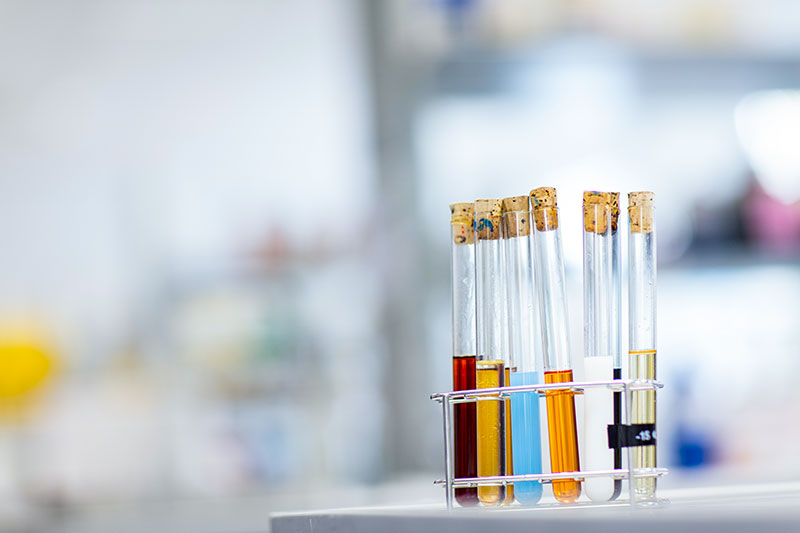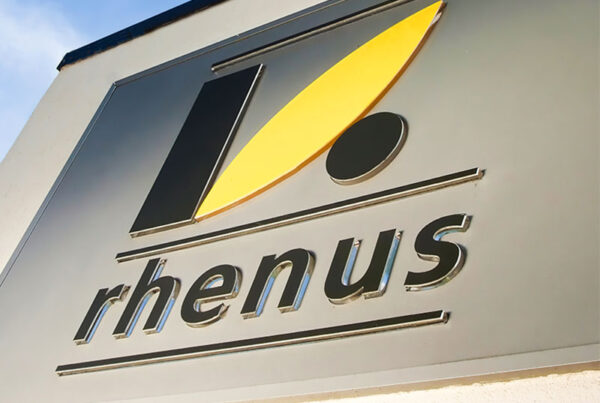Measuring the coolant concentration
Reading time: 6 Min. | 20.02.2018
Content
Easy to measure with the manual refractometer
The manual refractometer makes measurement of the concentration easy for you and helps to identify quality changes in the coolant at an early stage. The application is very easy: It involves simply adding a few drops of the coolant emulsion to the refractometer. The fluid’s index of refraction can then be read off. The coolant concentration in vol.% can be obtained by multiplying the result with the specific factor of the product.
Eliminate measurement errors by using a drop of water to carry out a baseline adjustment prior to using the refractometer. To make this adjustment, turn the small upper screw of the measuring device until zero is displayed.
The percentage volume of the concentrate in the mixture of coolant can be determined very simply using the measurement from the manual refractometer. The measurement is sufficiently accurate and can be used easily on site for up to 95% of measurements.
What are the limitations of the refractometer measurement?
You contribute to maintaining lubricating efficiency and corrosion protection by continuously monitoring the coolant concentration. However, increasing the service life of the emulsion makes reading the refractive index of the liquid more difficult. The index depends on the size of the oil droplets in the coolant emulsion. If there are foreign oils in the emulsion, they can influence the droplet size or dispersion.
If measurement is no longer feasible, the emulsion sample can be mixed with a supporting emulsifier. Adding about 0.1–0.2% supporting emulsifier to the sample helps to finely disperse the emulsion again. The same amount of supporting emulsifier must then be added to a water sample. The measured refractive index is then deducted from the refractometer measurement performed in the same way and the difference multiplied with the refractometer factor.
If there is still no recognisable line in the refractometer reading, please do not hesitate to contact us.

Three more coolant-measuring variants in the rhenus laboratory
If no feasible measurement can be performed with the manual refractometer despite the use of a supporting emulsifier, laboratory measurements can be helpful. They are even useful for production managers: Laboratory measurements can achieve much more accurate values, which enable a specific action to be recommended.
Skin protection and hygiene step by step:
Variant 1: Acid cleavage using a soluble oil tester
With acid cleavage, the portion that can be separated with acid is measured in the water-mixed coolant. For this, a special measuring piston, 100 ml of emulsion with 30 ml of concentrated acid, is enriched in the soluble oil tester. For the acid cleavage to take place, the mixture of acid and emulsion is then stored for 24 hours at 90°C.
During the process, the water and oil separate, enabling you to read off the volume of the separated oil. Then you can multiply the volume of the oil phase with the product-specific splitting factor to determine the coolant concentration.
Variant 2: Continuous Flow Analysis (CFA)
Continuous flow analysis is a specialised and automated wet-chemical flow analysis procedure, which has the advantage of not being dependent on foreign oil.
During this process, the analysis system draws in samples of the emulsion, directs them individually into “method manifolds” and divides them proportionally for simultaneous analysis of each sample. The CFA enables the measurement of seven different parameters, two of which can be used for concentration measurement. It can be used, for example, to determine how much boron or potassium is in the coolant concentration.
Variant 3: Titration
The titrator helps to determine the alkalinity of the emulsion. The coolant concentration in the emulsion can be determined from the amount of acid required. Like the continuous flow analysis, its advantage is that it is not dependent on foreign oil.
Rhenus Lub helps you with reliable measurements
Production managers must be aware that coolant concentration values that are only estimated—and not measured—not only lead to incorrect results, but also to the functional impairment of processing machines and equipment. At Rhenus Lub, we are here to advise you on safe and reliable measuring results, with no estimates. Please don’t hesitate to contact us.
Keywords
Download











